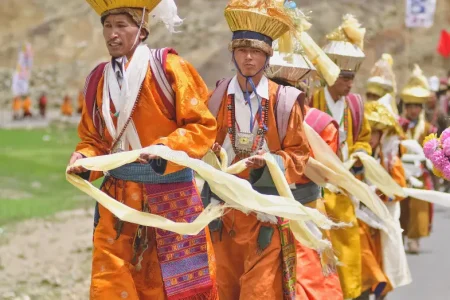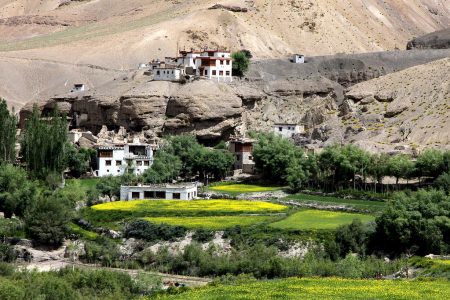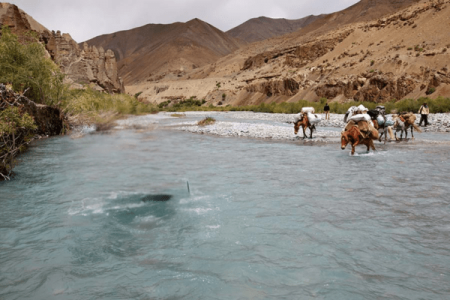Conclusion
Hemis Monastery is not just a place of worship; it is a testament to the enduring spiritual heritage of Ladakh’s high-altitude borderlands.
Located about 40 kilometers southeast of Leh, Hemis Monastery is one of the largest and most famous monasteries in Ladakh. Founded in the 17th century by the Ladakhi King Sengge Namgyal, it belongs to the Drukpa Kagyu sect of Tibetan Buddhism. The monastery is situated at an altitude of approximately 3,500 meters and is renowned for its rich history, stunning architecture, and vibrant religious festivals.
Hemis Monastery is renowned for its massive, intricately designed prayer halls, ancient statues, and beautiful murals that adorn the walls. The monastery is home to numerous valuable thangkas (Buddhist scroll paintings), and it also houses a large collection of ancient scriptures and artifacts that hold great cultural and spiritual significance.
The Hemis Festival, held annually in June or July, is one of the biggest and most significant events at the monastery. During this festival, a grand procession takes place, accompanied by traditional Cham dances performed by monks wearing colorful, elaborately painted masks. These dances symbolize the victory of good over evil and are performed in honor of Guru Padmasambhava, the founder of Tibetan Buddhism in the region. The Hemis Festival attracts thousands of visitors from across the globe, offering them a unique opportunity to witness Ladakh’s vibrant Buddhist culture.
Beyond its cultural importance, Hemis Monastery is a place of intense spiritual practice. It remains an active center of learning and meditation, with a dedicated community of monks who follow strict Buddhist disciplines. The serene and tranquil environment of the monastery provides the perfect backdrop for reflection and prayer, making it an ideal place for those seeking peace and spiritual solace.
The monastery’s scenic location, amidst the dramatic landscapes of Ladakh, adds to its charm. It offers visitors a unique chance to immerse themselves in Ladakhi culture, spirituality, and breathtaking natural beauty.
Whether you’re a seeker of faith or beauty, Hemis Monastery promises to touch your soul and stay etched in your Ladakhi memories forever.




